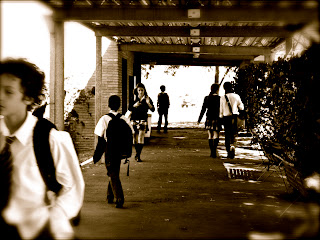This Russian film movement began in 1924/25 and lasted till the early 1930’s. Only a small amount of movies were made, about 30, but they were extremely influential. Eisenstein’s strike (1925) was the most successful movie made by Sergei Eisenstein, the most recognised director of the Soviet Montage.
Soviet History and Film Production
In 1917 Russia suffered two extremely big revolutions, in February, eliminating the Tsar’s government, and in October, when the Union of Soviet Socialist Republics was created. Narkompros, the Minister of culture, controlled the film industry.
Narkompros created, in 1919, the State School of Film. A year later, Lev Kuleshov joined the school and began to explore the importance of editing in a film, developing the main idea of the Montage theory and style. He believed that the viewer’s response to the movie was based in the editing, and not on an individual shot. He saw film as the most important art, and as an effective medium for propaganda and education.
Montage
One main characteristic of Soviet Montage films is the downplaying of individual characters in the center of attention. Single characters are shown as members of different social classes and are representing a general type or class. In Eisenstein's Strike there is only one character named individually in the entire film. Another characteristic is that Soviet Montage filmmakers often chose strikes and other clashes in the history of revolutions e.g. Eisenstein's Potemkin, October and Strike.
The central aspect of Soviet Montage style was the area of editing. Cuts should stimulate the spectator. In opposition to continuity editing Montage cutting often created either overlapping or elliptical temporal relations. Overlapping editing means, that the second shot repeats part or all of the action from the previous shot. Through repetitions of this method the time an action takes on the screen expands. Elliptical cutting creates the opposite effect. A part of an action is left out, so the event takes less time than it would in reality. Elliptical editing was often used in the form of the jump cut. In Strike, Eisenstein cuts from a police officer to a butcher who kills an animal in the form of a jump cut.
The butcher is not part of the story but should make the viewer think about the connection and come to a conclusion such as: the workers were slaughtered like animals. The butcher is here a nondiegetic element. Anything that is part of the film story world is diegetic. A nondiegetic element exists outside the story world. There is no connection between the slaughter of the animal. The use of such nondiegetic shots was central to Eisenstein's theory on "intellectual montage". Intellectual montage creates its effects through conflict such as the juxtaposing of shots that have no direct connection. Soviet Montage filmmakers often shot on location. Strike, in fact, was shot in a real factory. The machine and the factory became symbols of the new society in this time.
Battleship Potemkin
Kuleshov Experiment
Influence of Soviet Montage on Modern Cinema:
A movie that follows the characteristics of a soviet montage film is Psycho (Hitchcock 1960)
Hitchcock uses a lot of non continuos editing, and makes a sequence that as one shot that is not related to the previous shot, he also includes shots that portray what the character is looking.
 |
| Shot 1: the teacher is starting the lesson. |
 |
| Shot 2: the responsible student is paying attention to the class. |
 |
| Shot 3: some students are still walking around the school. |


Outstanding work, Belén. Hitchcock class! Superb organisation of the information, I like the slideshow and the activity at the end is brilliant, and a perfect selection of clips. Your own images work really well to reinforce the main points regarding editing and meaning.
ResponderEliminarFormal feedback after half term, but superb work. Well done.